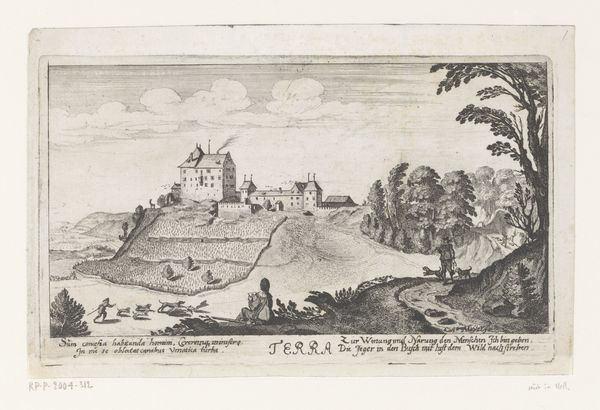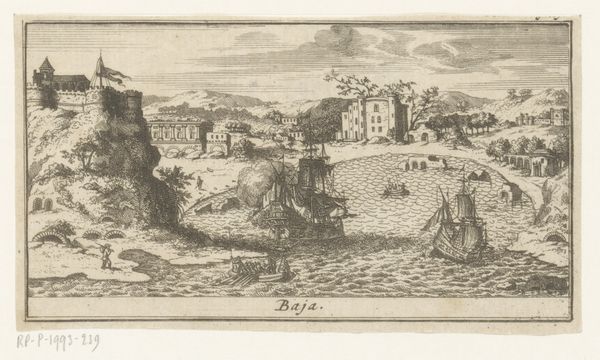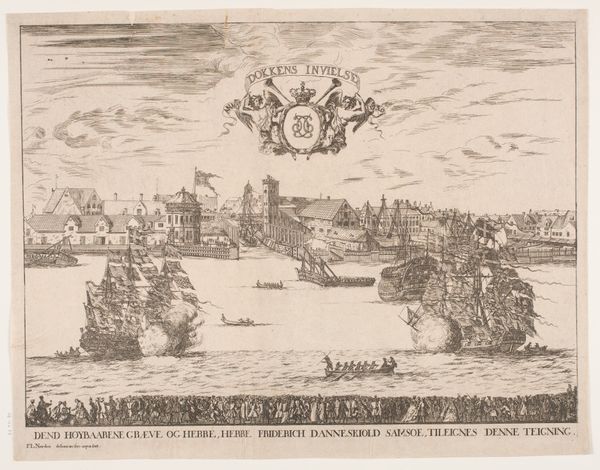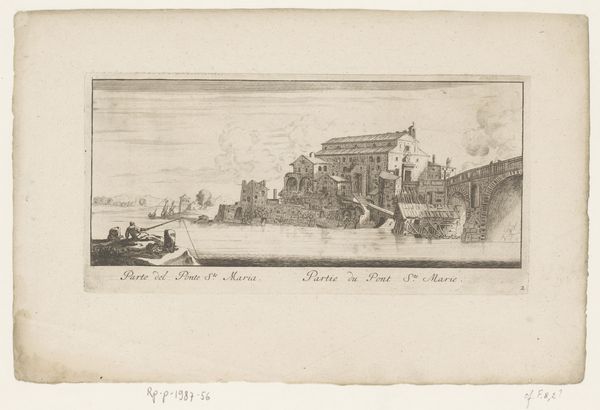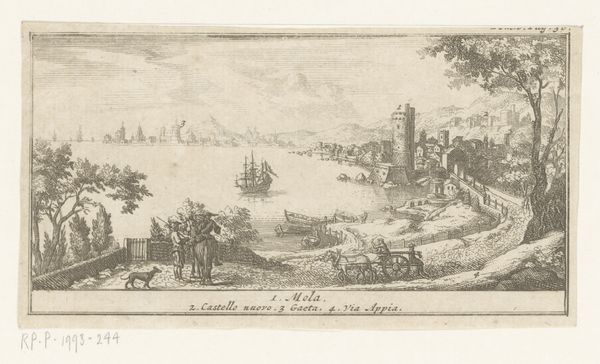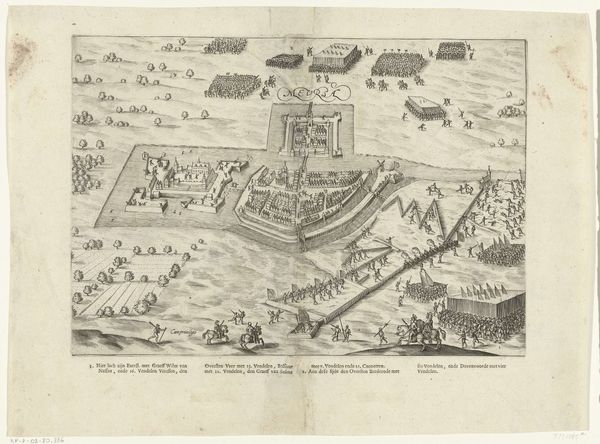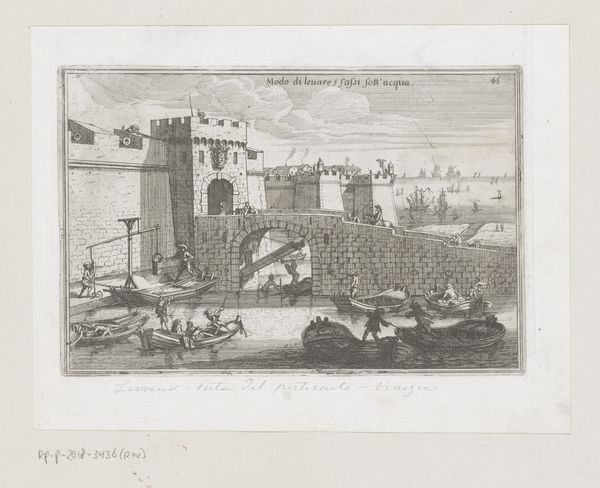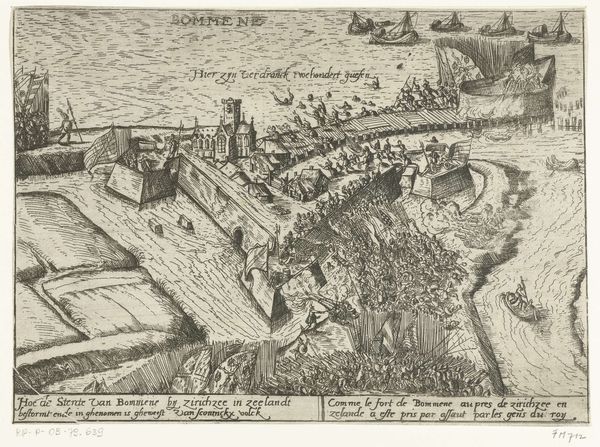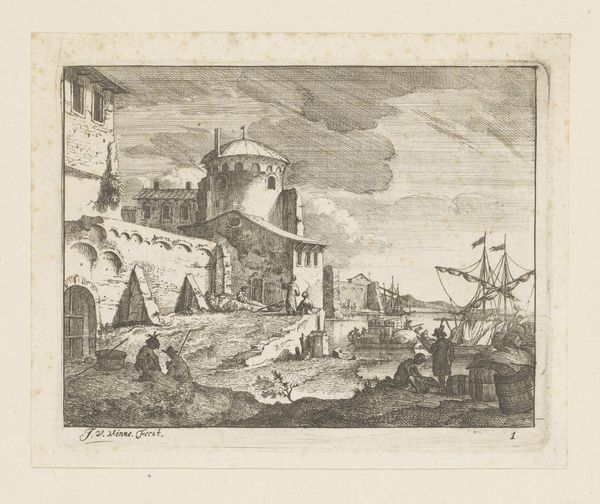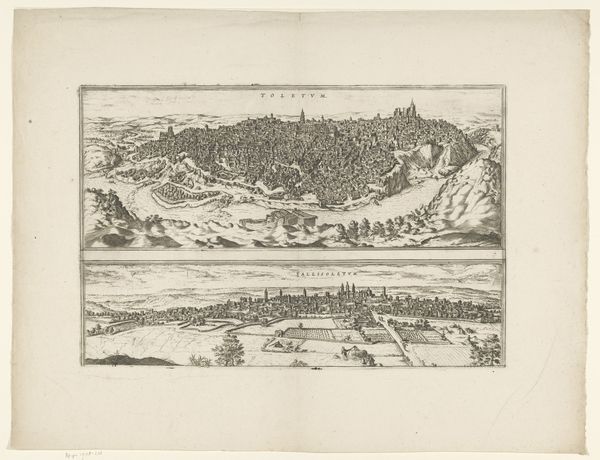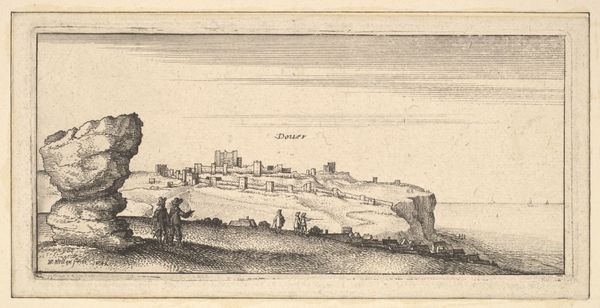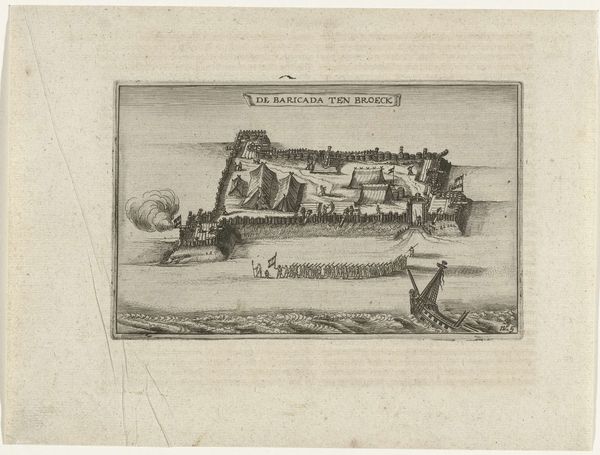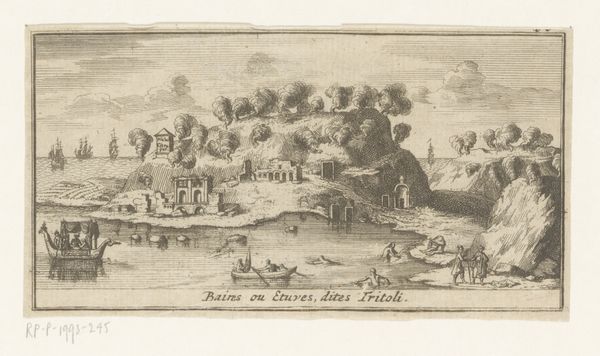
print, engraving
#
baroque
# print
#
old engraving style
#
landscape
#
line
#
cityscape
#
engraving
Dimensions: height 71 mm, width mm
Copyright: Rijks Museum: Open Domain
Editor: This engraving, "Cumae," attributed to Pieter van der Aa, dating between 1682 and 1730, depicts a cityscape by the sea. I’m struck by the contrast between the crumbling ruins and the activity in the harbor. What does this juxtaposition say to you? Curator: Well, consider the period in which this print was created. The Baroque era was a time of great interest in classical antiquity. Prints like this one weren't just aesthetic objects, but also served a vital role in disseminating knowledge. The ‘crumbling ruins’ speak to a fascination with history, while the busy harbour possibly alludes to contemporary trade routes and maritime power of the time. Think of this not just as a picturesque scene, but a carefully constructed statement about time, power and knowledge. Editor: So, you're suggesting the print is about more than just the aesthetics of the place? Curator: Precisely. It's about the cultural and historical context in which that place was viewed, reproduced and disseminated. Cumae, with its historical significance, becomes a symbolic reference, especially considering its association with the Sibyl. The depiction also feeds into a particular 18th century sensibility, that balanced admiration of the classical past with commercial success. Does that change your view? Editor: It does. I was focused on the visual contrast, but seeing it as a comment on the era's values is really insightful. Thank you for sharing your thoughts. Curator: It was a pleasure to explore how this print can provide us insights into history, visual composition and meaning-making.
Comments
No comments
Be the first to comment and join the conversation on the ultimate creative platform.
